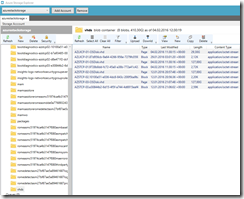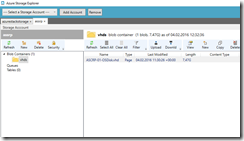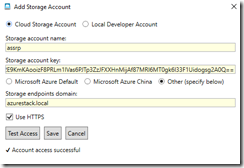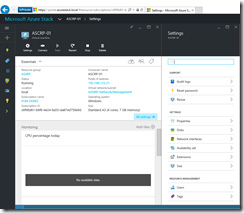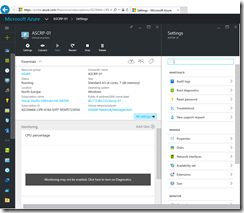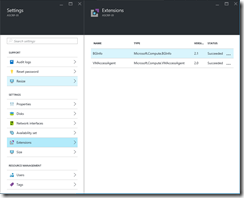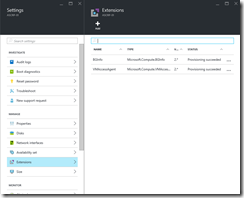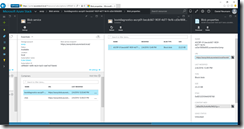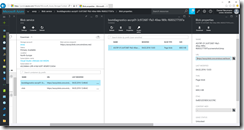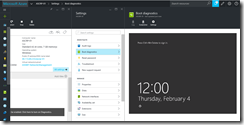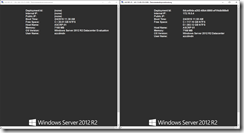One of the interesting things of Azure Stack beside the underlying hardware infrastructure is the consistency with Azure. But interesting is the wrong wording for this it is the key concept and one of the reasons why Azure Stack exists. True consistency between the public cloud offer and the private cloud offer. It is an unique offer right now on the market.
Let us have a look on some of the good and bad commonalities of these products.
If you only get for example an open and ready to use Azure Storage Explorer, you cannot see a difference between Azure and Azure Stack.
Only when you are configuring the blob storage endpoint by yourself you can see the difference.
The next part we are looking at is the VM blade in both portals.
You may recognize that they are slightly different. The reason for that is that the Azure portal receives continuous updates and Azure Stack TP1 is stuck on the version it has been released with. The same counts for ARM, if you have a look at the API versions for the network components. Azure Stack uses the version 2015-05-01-preview and Azure version 2015-06-15.
The extensions blade is the same and on both VMs I have installed the same extensions.
One more example when looking at the boot diagnostics settings. In Azure Stack the setting is missing in the VM blade, because of the reason I have mentioned above. But the way over the storage account to download the BMP file is the same as in Azure.
Jumping back to the VM extensions we see some differences when we connect to the VMs via RDP. The information about the Deployment Id and the Internal IP are empty on the Azure Stack VM.
Before we moving on to some of the bad commonalities, one additional thing you may have discovered when looking at the BGInfo screenshot. The Azure Stack VM has no temporary disk drive. Actually I do not know, if we get this with the GA or not. From a deployment perspective I would say it is not necessary for on-premises deployments. But from a consistency perspective it is a must have.
Now we are coming to two bad commonalities between Azure Stack and Azure. On Azure you can only run Generation 1 VMs and use VHD as the format for virtual disks. The same counts for Azure Stack, because it is consistent with Azure.
As you can see Azure Stack is consistent with Azure and this will be the key. Write once, deploy anywhere!
Also some of the things are not available yet. But we are at the beginning of a wonderful journey. The Cloud OS story gets real!
Want to change things in Azure Stack? Put your voice on the Azure Stack User Voice.
